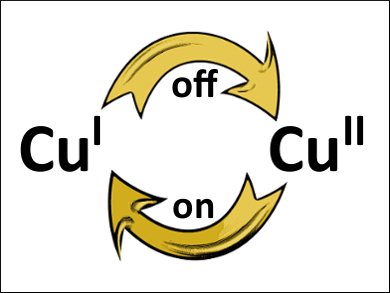Atom transfer radical polymerization (ATRP) allows the polymerization of a broad selection of monomers with control over the molecular weight, dispersity, and architecture. The reaction uses copper catalysts, which can be controlled by redox chemistry: polymer chains are activated by CuI complexes and deactivated by CuII complexes. Switching the reaction on by converting CuII to CuI is a known approach. However, switching the catalyst off using chemical stimuli had not been investigated so far.
Krzysztof Matyjaszewski and colleagues, Carnegie Mellon University, Pittsburgh, PA, USA, have developed an ATRP reaction that can be switched both on and off by redox reactions. The team used ferrocenium hexafluorophosphate (FcPF6) or oxygen to switch off the Cu-based catalyst by oxidation from CuI to CuII. Ascorbic acid was used to switch the catalyst on by reducing CuII to CuI. The team observed this switching by Vis-NIR (near-infrared) spectroscopy and kinetic experiments.
According to the team, such an approach for the control of chain growth in polymerization reactions could allow the synthesis of advanced polymers with tunable properties. The researchers aim to develop advanced techniques with multiple orthogonal stimuli to precisely modulate the ATRP catalyst.
- Redox-switchable atom transfer radical polymerization,
Sajjad Dadashi-Silab, Francesca Lorandi, Marco Fantin, Krzysztof Matyjaszewski,
Chem. Commun. 2019, 55, 612–615.
https://doi.org/10.1039/c8cc09209e




